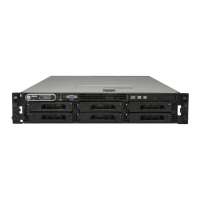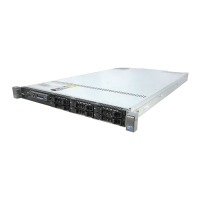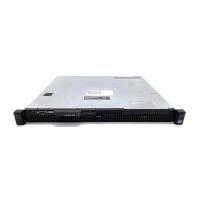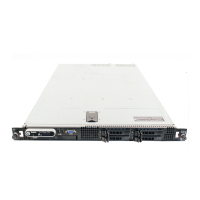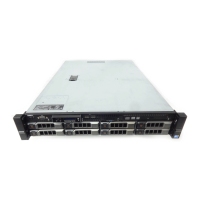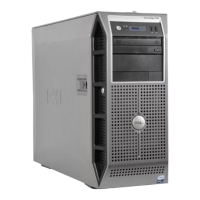10-4 Dell PowerEdge 4300 Systems Installation and Trubleshooting Guide
,QVWDOOLQJDQG5HPRYLQJ6&6,+DUG'LVN
'ULYHV
The following subsections describe how to install and remove SCSI hard-disk drives
from the computer’s hard-disk drive bays.
+RW3OXJJDEOH6&6,+DUG'LVN'ULYHV
&$87,21+RWSOXJJDEOHGULYHLQVWDOODWLRQDQGUHPRYDOLV
QRW
VXS SRUWHGIRU
V\VWHPV
ZLWKRXW
D'HOO3RZHU(GJH([SDQGDEOH5$,'&RQWUROOHUKRVWDGDSWHU
FDUG5HPRYLQJDGULYHLQWKLVVLWXDWLRQZLOOUHVXOWLQDORVVRIGDWD
Dell PowerEdge 4300 systems with a PowerEdge Expandable RAID Controller host
adapter card installed support hot-pluggable drive installation and removal. Before
attempting to remove or install a drive while the system is running, see the documen-
tation for the Dell PowerEdge Expandable RAID Controller to ensure that the SCSI host
adapter is configured correctly to support hot-pluggable drive removal and insertion.
,QGLFDWRU&RGHVIRU+RW3OXJJDEOH6&6,+DUG'LVN'ULYHV
If a Dell PowerEdge Expandable RAID Controller host adapter card is installed in the
Dell PowerEdge 4300 system, three indicators on the hard-disk drive carrier provide
information on the status of the SCSI hard-disk drive (see Figure 10-3).
)LJXUH+DUG'LVN'ULYH,QGLFDWRUV
Table 10-1 lists the drive indicator patterns established by the SCSI backplane board
firmware. Different patterns are displayed as drive events occur in the system. For
example, in the event of a hard-disk drive failure, the “drive failed” pattern appears.
After the drive is selected for removal, the “drive being prepared for removal” pattern
hard-disk drive
activity indicator
hard-disk drive
failure indicator
hard-disk drive
online indicator

